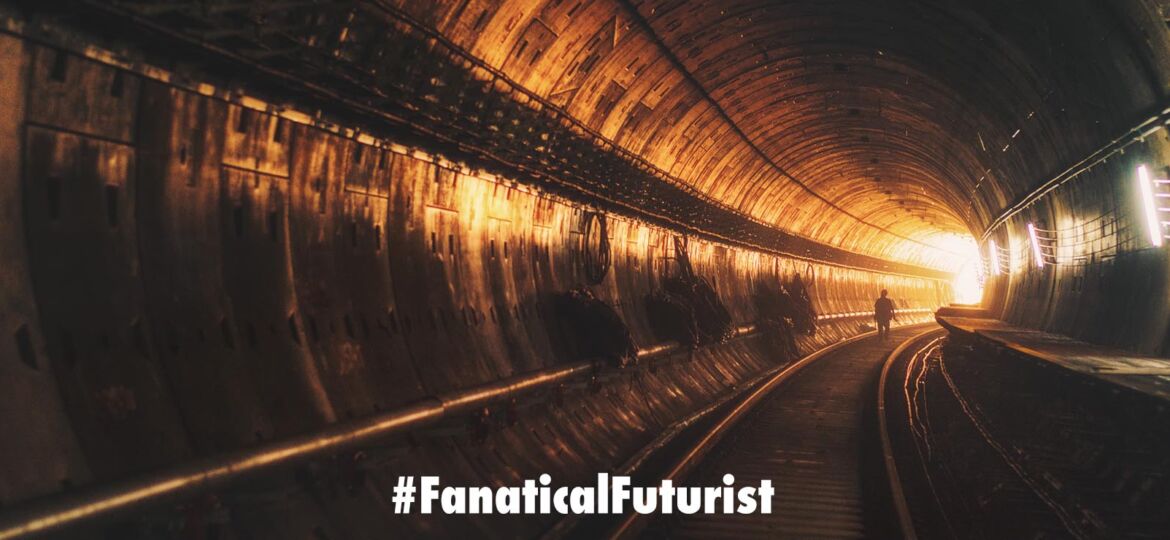
WHY THIS MATTERS IN BRIEF
Today digging tunnels is slow – as slow as a snail – but this new method makes it exponentially faster and cheaper opening up all manner of possibilities.
 Love the Exponential Future? Join our XPotential Community, future proof yourself with courses from XPotential University, read about exponential tech and trends, connect, watch a keynote, or browse my blog.
Love the Exponential Future? Join our XPotential Community, future proof yourself with courses from XPotential University, read about exponential tech and trends, connect, watch a keynote, or browse my blog.
So far we’ve seen Google invest in hypersonic tunnelling systems, and Elon Musk launch the Boring Co, but now British technology company, hyperTunnel has just unveiled the world’s first tunnel constructed entirely by robots as part of an ongoing project for Network Rail. The underground structure was built at hyperTunnel’s R&D facility in the North Hampshire Downs using a new revolutionary automated construction method.
First, the new method uses swarms of underground autonomous robots to construct an underground grid from which they deploy sensors into the surrounding geology. The data is then used to create an accurate digital twin of the site, then the robots 3D print the tunnel shell in situ. Once the shell is complete excavators then remove the material from the new tunnel and voila – one tunnel.
Not only does this process let the company build tunnels multiple times faster than any other technique we have today at half the cost but it also removes the need for human workers to enter the structure during construction which could also significantly improve safety for the tunnelling industry.
See how it works
Steve Jordan, Co-CEO and Co-founder of hyperTunnel, said: “To unveil our first large scale demonstration tunnel is a big step, not only for hyperTunnel, but for the tunnelling and construction industries which are eagerly anticipating the readiness of our approach to use, as appropriate, in their global projects. While using robots exclusively to build underground structures is dramatically different, the contributing technologies, such as digital twins, robotics, 3D printing and digital underground surveying, supported by AI and VR, are all well-proven in other industries. In fact, the hyperTunnel in-situ method is all about de-risking construction projects.”
The Network Rail project has been demonstrating the hyperTunnel process and exploring the technologies that could enable low-disruption tunnel repairs for the UK’s regional railway infrastructure.
As part of this project, the first 6 metre long and 2 metre high and wide Peak XV pedestrian scale tunnel was revealed at the British Tunnelling Society Conference & Exhibition in London last week.
David Castlo, Network Technical Head (Mining and Tunnels) at Network Rail, said: “Our large portfolio of Victorian tunnels requires increasing levels of work to meet the needs of the railway network. However, we want to reduce the level of disruption to our passengers so we are constantly searching for new approaches to enlarging or repairing tunnels that reduce the length of time a tunnel will be closed to trains. Peak XV moves us a step closer to that goal and, crucially, with a method that reduces workforce safety risk.”
















